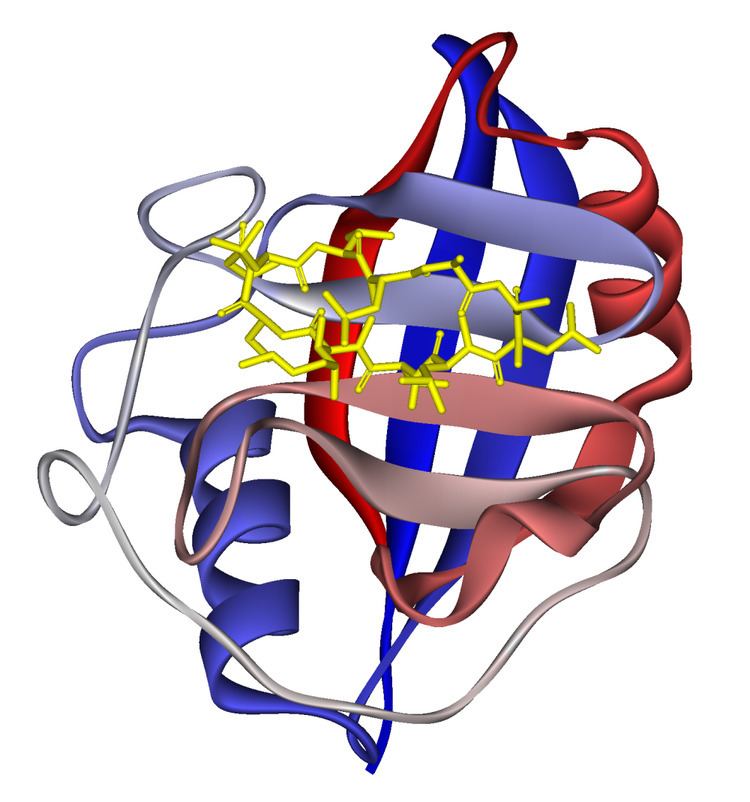Symbol PPIA HUGO 9253 RefSeq NM_203430 | Entrez 5478 OMIM 123840 UniProt Q3KQW3 | |
 | ||
Nanosecond dynamics of cyclophilin a fragment complex
Cyclophilins are a family of proteins from vertebrates and other organisms that bind to ciclosporin (cyclosporin A), an immunosuppressant which is usually used to suppress rejection after internal organ transplants. These proteins have peptidyl prolyl isomerase activity, which catalyzes the isomerization of peptide bonds from trans form to cis form at proline residues and facilitates protein folding.
Contents
- Nanosecond dynamics of cyclophilin a fragment complex
- Cyclophilin a stabilizes the hiv 1 capsid through a novel non canonical binding site
- Cyclophilin A CypA
- Cyclophilin D
- Drug targets
- Examples
- References
Cyclophilin A is a cytosolic and highly abundant protein. The protein belongs to a family of isozymes, including cyclophilins B and C, and natural killer cell cyclophilin-related protein. Major isoforms have been found throughout the cell, including the ER, and some are even secreted.
Cyclophilin a stabilizes the hiv 1 capsid through a novel non canonical binding site
Cyclophilin A (CypA)
Cyclophilin A also known as peptidylprolyl isomerase A, which is found in the cytosol, has a beta barrel structure with two alpha helices and a beta-sheet. Other cyclophilins have similar structures to cyclophilin A. The cyclosporin-cyclophilin A complex inhibits a calcium/calmodulin-dependent phosphatase, calcineurin, the inhibition of which is thought to suppress organ rejection by halting the production of the pro-inflammatory molecules TNF alpha and interleukin 2.
Cyclophilin A is also known to be recruited by the Gag polyprotein during HIV-1 virus infection, and its incorporation into new virus particles is essential for HIV-1 infectivity.
Cyclophilin D
Cyclophilin D, which is located in the matrix of mitochondria, is only a modulatory, but not structural component of the mitochondrial permeability transition pore. The pore opening raises the permeability of the mitochondrial inner membrane, allows influx of cytosolic molecules into the mitochondrial matrix, increases the matrix volume, and disrupts the mitochondrial outer membrane. As a result, the mitochondria fall into a functional disorder, so the opening of the pore plays an important role in cell death. Cyclophilin D is thought to regulate the opening of the pore because cyclosporin A, which binds to CyP-D, inhibits the pore opening.
However, mitochondria obtained from the cysts of Artemia franciscana, do not exhibit the mitochondrial permeability transition pore
Drug targets
Cyclophilin inhibitors are being developed to treat neurodegenerative diseases.
Examples
Human genes encoding proteins containing the cyclophilin type peptidyl-prolyl cis-trans isomerase domain include:
